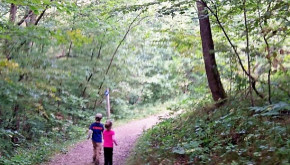
Who will care for your land in 20, 30 or 40 years? I have seen many estate planning workshops offered on-line over the lunch hour. I have received offers of dinner, in return for staying to hear an attorney talk about wills and trusts. The focus of these seminars is typically the tax implications of passing the land on to the next generation. And how you can save your heirs money by planning now. This is one important consideration in thinking about who will care for your land in the future.
Priority, however, should be given to communication between you as an owner of the property and the heirs or person who will receive the property. Of interest are three items, 1) your hopes and dreams; 2) the management or care of the land; and 3) finally, the legal tools used to pass land from one person to the next.
Succession planning involves family communication, transitioning the management of the land from one generation to the next and transferring the property title to the next generation. The importance of family communication is demonstrated in three cautionary tales presented by Oregon State University. The first “Not What Dad Wanted”; the second “Deathbed Planning”, and the third, “Tale of Two Sons” can be viewed at the Oregon State University Media website along with several other short video’s introducing succession planning. If the family does not agree on the disposition of the land and the responsibilities that go with landownership, passing the land on to the next generation is likely to fail.
Imagine a family of five. The land has been in the family since the mid-1800’s. The hopes and dream of the mother, and owner of the property, is to pass it to the children and that the children would care for the forest. However, the children have moved away from the property and live in the far corners of the United States. Two of the children would like to keep it provided that such ownership doesn’t cost them any money. One would like to keep it even if it meant some cost. If the land is passed to the three children in a trust without having discussions about the interest and ability to care for the land, it is likely that the two children who do not want the expense of ownership will ask the other child to buy them out. In many cases such a buyout is not financially possible. The end result being some of or all of the land is sold to pay bills.
Beginning a conversation with your heirs about your hopes and dreams and their interests and ability to own and manage the land will help determine how to develop a succession plan. To foster family communication, many families have found it useful to use a scale that asks each family member to rank themselves on a 1 to 10 scale where 1 is "the property is a financial asset only" and 10 is "the property is a priceless heirloom." The ranks are then discussed among family members.
The second step is to think about how to transfer the management or care of the property to the next generation. This also involves family communication while at the same time considering who will implement your lands management plan 20 or more years into the future.
After you know what you and your family want from the land and how you want to care for the it you can begin working with accountants and attorneys to plan for the transfer of your land. The www.timbertax.org and the tab for estate planning have many helpful links to publications that discuss various options for land transfer.
Family discussion, planning for the care of the property and finally planning for the transfer of the property are the three main steps in forest succession planning. A great way to begin a family discussion is to talk about what you value, your hopes and dreams, and your vision for the future.
Special author Mike Reichenbach, University of Minnesota Extension Educator

